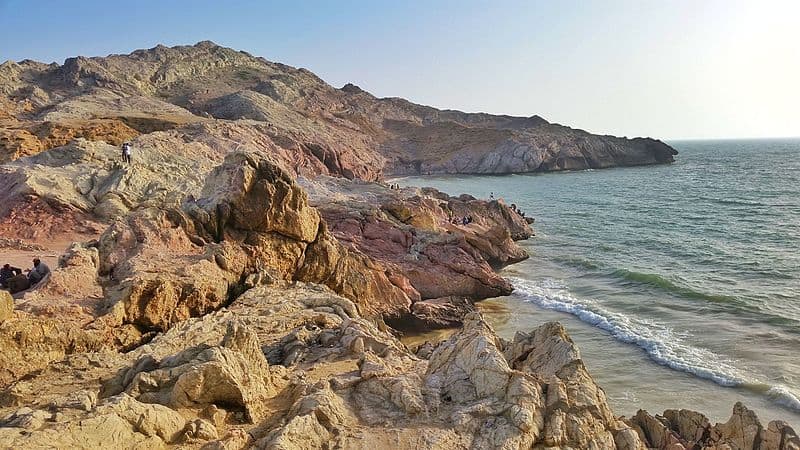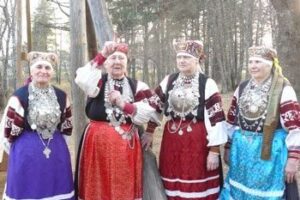
Balochistan is aiming for economic success through tourism in Pakistan
By Matt Martella
Balochistan is quietly building a strong industry based on tourism.

This province of Pakistan is rich with impressive sights, historical significance, and Islamic culture, making it a desirable attraction for hikers, foodies, music-lovers, history-lovers, and people who just want to explore a culture that isn’t well-known throughout the world.
For expert travelers, it’s hard to come up with a lesser-known place to discover. Who do you know who has been here?
Balochistan’s specific vision, according to their tourism site, is “To value tourism as a major contributor to a sustainable economy of the province, having it developed as an attractive and unique destination for tourists around the world.”
The Government of Balochistan is putting a lot of work into improving and advertising its province to the entire world and, considering all this cultured and historic area has to offer, attracting tourists should not be a problem.

Capital City is Quetta
Balochistan comprises 44% of Pakistan, making it the largest province in the country. The capital city, Quetta, is located in a river valley near Afghanistan and is part of the most populated region of the province.
Surrounding the city is a ring of red and copper mountains that adds to the city’s isolation and charm.
Balochistan Culture
Despite the long stretches of deserts and barren lands, the Balochi people have a distinct and deep culture with elaborate clothing, unique food, and large festivals that include the whole Balochi community. Baloch culture places heavy significance on the art of storytelling, and poets and storytellers are highly revered in these communities.
Sibi Mela is a centuries-old cultural festival that attracts Balochi livestock breeders to display, trade, and even enter their livestock into competitions. Camels, cattle, and goats are just some of the animals highlighted in this important festival that is considered an extension of the Mehrgarh Civilization, the second-oldest agricultural settlement in human history.
Baloch culture day occurs on March 2nd and celebrates the strength of the Balochi people and their success in conflicts throughout the thousands of years of Balochistan’s existence. To celebrate this, the Balochi people wear traditional dresses and hold passionate rallies in honor of the deep history of their province.

Like other provinces in Pakistan, the typical Baloch dress is the shalwar kameez. Even though this is the case, Baloch culture has its own unique modifications to the traditional dress.
Balochistan Dress
Baloch men wear a turban with a wide, loose shalwar and knee-long shirts. Women wear shirts with big pockets and embroidery with embedded, round mirror-work in the front. Dupatta, a shawl-like scarf, is used to cover the head and shoulders.
Folk music is very popular in Baloch culture. Common instruments used on Baloch music include the nal (flute) and long-necked string instruments like the tambura and soroz.
The Dochapp and Lewa are the traditional dances to Baloch folk music, and women have their own type of dance which involves moving in a circle and clapping.
Balochistan Sights
Moola Chotok, a small valley about 1,237 meters above sea level, is considered to be the most beautiful place in all of Balochistan.
With its massive mountains, streams, waterfalls, and hot springs, this verdant valley is ideal for hikers as well as people who just want to relax and enjoy the scenic views.

Speaking of scenic, the Pir Ghaib waterfall is another amazing view located near the Bolan Valley.
Balochistan is also the home of Hingol, the largest National Park in Pakistan. Established in 1988 along the Makran coast, the Hingol National park covers an area of 64,000 square miles.
The park is an excellent habitat to wild animals including ibexes, Urials, and Chinkara, along with a number of resident and migratory birds. Mammals in the park include Sindh Leopard, Indian Fox, Jungle Cat, Jackals, Sind Wild Goat, Chinkara Gazelle, Honey Badger, Indian Pangolin, and many more.
If you somehow get bored by the mountain ranges, waterfalls, and sprawling valleys, the Hingol National Park is the home of the Chandragup mud volcanoes. These volcanoes are a rare and spectacular view, and they should not be missed if you are traveling through the area.
More parks and waterfalls wait to be explored in the Sulaiman-Kirthar Mountain ranges, a very popular tourist attraction located between the Balochistan Plateau and Indus Plain.

Princess of Hope is a natural rock formation that “manifests a princess looking beyond horizons (maybe to hope).” Princess of Hope is on top of a mountain range along the Makran Coastal Highway.
The rock formation is just one of many carved out of the mountain from years of rain and wind, but the Princess of Hope stands out among the pack due to its perfect appearance of being sculpted by an artist.
Balochistan is also the home of many of the best beaches in Pakistan, including Kund Malir and Sapat beach.
Sapat beach is especially notable for Buji Koh, an isolated standing steep cliff on the ocean tides, and its hidden caved beach filled with all kinds of underwater species.
History
Balochistan is extremely rich in human history, being the home of civilizations as early as 9000 years ago. Many iconic historical figures and empires have crossed this area of land, such as Alexander the Great and the Macedonians, Sultan Mohammad Khan of Khwarizm, Nadir Shah, the Mongol empire, and the Mughal empire.
Balochistan has endured many wars through its history, and some of its defensive structures used in several different time periods still remain.
Miri Fort, located in Turbat city, is literally layered in history. The upper stratum is a Muslim fort from the medieval period while the lower stratum was constructed in 5000 BCE during the Neolithic period.
The Mir Chakar Khan Fort was constructed in the 16th century to protect Baloch tribesmen in the area. Located in current day District Sibi, the Fort was built out of the mud.
The Mehrgarh archeological site in the Bolan pass dates all the way back to the 8th millennium BCE and was the foundation of the legendary Indus civilization.
- Brightline: High Speed Rail to Vegas - August 25, 2020
- Tibet Motorcycle Tour: Freedom on the Road - May 25, 2020
- In Search of Appalachia is a Must-Read - May 22, 2020






Great intro, ignore the haters
Basically this is not Balochi dress that on the picture.
And also you did some wrong information about Balochistan.
Good introductory/attractively written article on Balochistan but very little. A book can be written on Balochistan separately i.e history, culture, tourism in nations.
This is not Balochi dress. First of all, you should go to Balochistan. Then you’ll see the real face of Balochistan. Please correct your article. Why you not wrote 1000s of Baloch people abducted why you did not write 10000s of Baloch killed by Pakistani security forces ????????????
Can i do correction in something, Balochi is a language and Baloch is a Nation so call them Baloch not Balochi people . Why didnt you wrote that 1000s of Baloch students,activists ,children and women have been forcibly disappeared or been killed by Pakistani security forces in Balochistan?? Why nothing has been seen in your article,just like human rights abuses by Pakistani security forces in Balochistan?
Dedagh we are aware of the political problems in Balochistan and all around Pakistan, but we wanted to show the world that there are wonderful places to explore and to see, it’s not just about problems. Thank you for clarifying the wording for us.
Agreed 100% 👍👍
Balochistan a beautiful place full of history..
Mark do try to visit north Pakistan too.. Incredible scenery
Thanks for this article good read